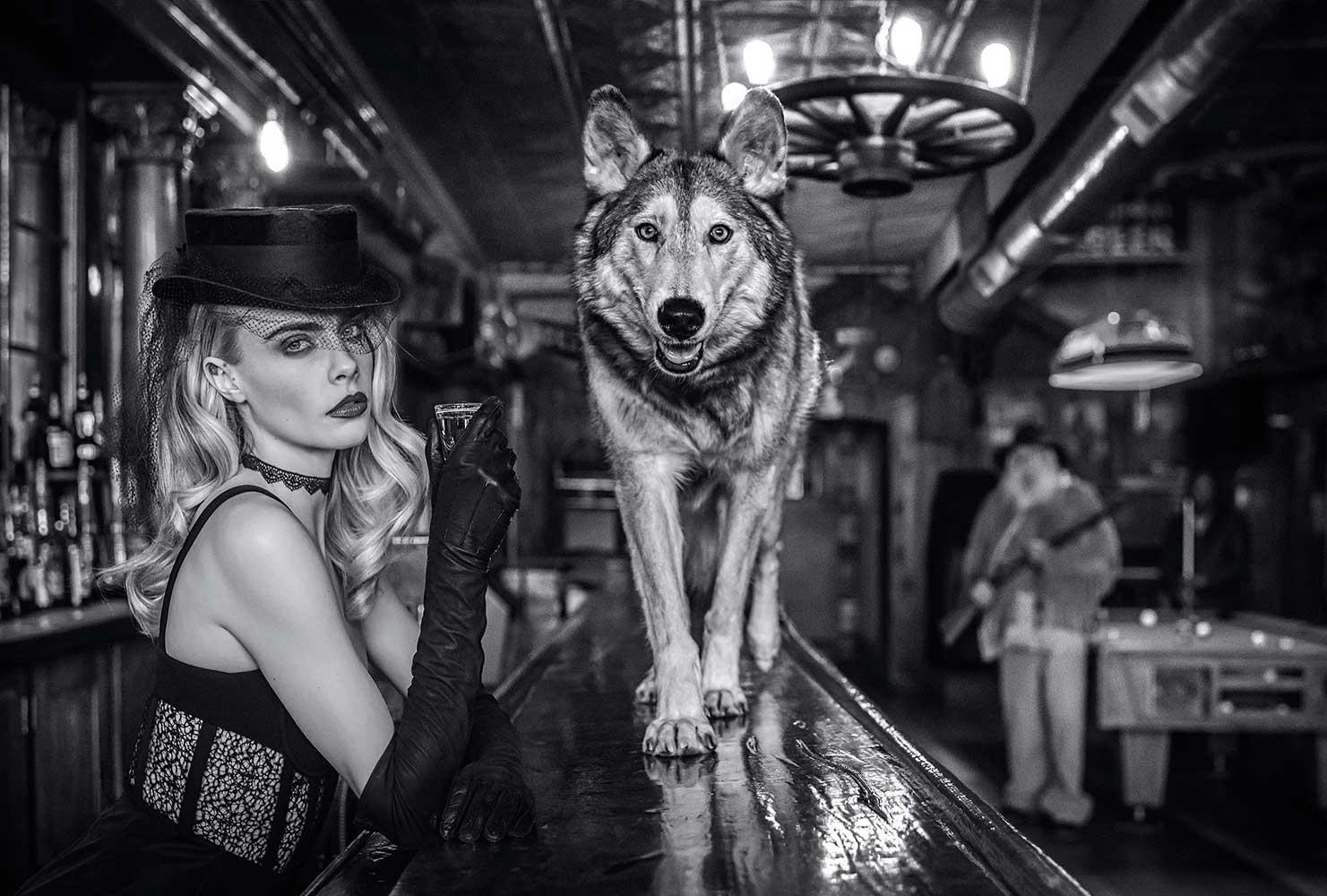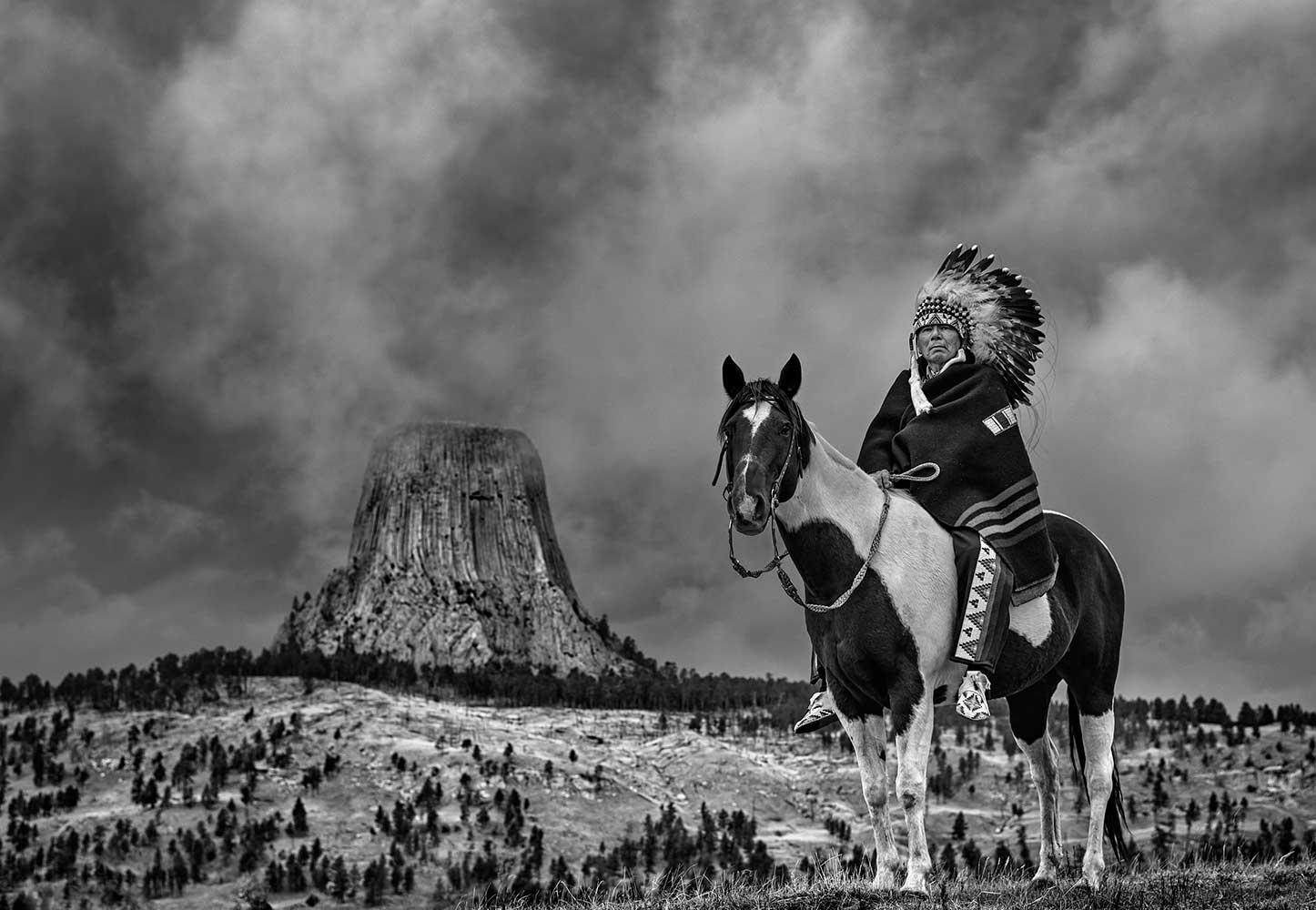Changing Lanes: When cowboys ran wild
25.02.2022 Arts & CultureIn the latest exhibition in Maddox Gallery is David Yarrow’s Changing Lanes, a homage to cinema, the Wild West, and a celebration of the rugged wilderness and the animals living in it.
Only previously seen in Maddox’s sister gallery in London, Changing Lanes covers photographs spanning multiple far-flung locations over the last two years. So determined to capture the perfect shot, David Yarrow has recently included a few more images from a penguin colony in Antarctica that he had taken barely two weeks before this article was written.
His third exhibition in Gstaad, Yarrow is a celebrated fine-art photographer focusing on evocative, cinematic images, and is particularly popular amongst the Gstaad set. His work suits the town extremely well, and a symmetry can be seen between Gstaad and his photographs with the rugged outdoors and the glamour! Alongside detailing powerful animals, I’m sure you’ll recognize a few faces of his subjects, his works dotted with uber-famous supermodels like Cindy Crawford and Cara Delevingne, as well as distinctive personalities like Jordan Belfort and Paris Hilton.
Highly influenced by cinema and pop culture, most of his works contain either visual references to films or in the title of the piece. Normally his works are presented in black and white, but occasional photographs he also shows in glorious colour, like his recreation of Cindy Crawford’s iconic 1992 Pepsi advertisement. Both his technicolour and monochrome pieces are presented side by side, and although different in hue, his works are linked through the bright and unwavering eyes of his subjects, who almost always are staring deep into the camera with a visceral, laser-like focus.
A particularly striking image, titled The Final Frontier, set in a 1920s themed saloon in Virginia City, features Cara Delevingne looking sultrily into the lens, complete with gloves and a veiled hat – but the star of the photograph is the imposing wolf stalking along the bar, intensely staring into the camera. Much of Yarrow’s work features wild animals, and it takes a lot of effort, luck – and bravery! – to get the perfect shot when it all comes together. David reportedly wore a necklace of chicken filets to grab the wolf’s undivided attention and its singular focus.
Delevingne also features in another famous photograph, titled Bonnie, based on Bonnie & Clyde. Set in the old mining village deep in the Southern Rockies of Colorado, Delevingne is both the centre of the image while also celebrating the local high-street, unchanged from the 1920s. “I wanted Bonnie – played by Cara Delevingne – to be as big a part of the image as possible, but I also needed the buildings on both sides of the street to frame the narrative in the middle. Working with wide angle lenses risks making a loose image and I was determined not to fall into that trap.”
Part of what makes Yarrow’s work so all-encompassing is his choice of settings. Between wastelands not far from the Canadian border and pioneer-themed saloons in Montana – the utter authenticity of his settings make his work so evocative.
His work almost has an otherworldly quality to it, and so much movement, as if you’ve just walked into the middle of a story. Iron Horse II depicts local cowboys with rifles drawn awaiting the arrival of an oncoming steam train. Yarrow was keen to shoot in this location, as “the narrow gauge track service remains largely the same as it was when the railroad opened in 1882,” and true to a time when cowboys and Native Americans had their differences, the image holds incredible suspense and also the threat of violence. A similar image, Vantage Point, depicts a steam train with a Native American on horseback raising his rifle in the air in the top right-hand corner of the photograph, showing the juxtaposition between past and future colliding – and the future barrelling ahead like a steam train, if you will.
As well as portraying the fauna and local cowboys of the region, Yarrow doesn’t fail to celebrate the Indigenous. He centres a famed local chief, Chief John Spotted Tail, in an iconic portrait set against the backdrop of Devil’s Tower, a sacred place for his tribe, but also the backdrop for Spielberg’s Close Encounters of a Third Kind, bringing in his love of cinema into an already dramatic image. He also features in several other photographs with cinematic narrative, such as in The Getaway starring next to Cara Delevingne, where they play maverick troublemakers outside a rough saloon. With taking such celebratory photographs of the natural world, it’s admirable how important it was for Yarrow to also honour the Indigenous guardians of it.
At the basest level, David Yarrow creates whole cinematic stories through singular photographs, but what he actually creates is so much more: a trip back in time with characters that, if you blink, look like they could move; a celebration of time past with characters who stare into your soul – there is no other option to feel their integrity through sharp, striking eye contact.
If anything, David Yarrow gives you all the tools to lose yourself in a story, as if you could step into the photograph, and be there yourself.
CLAUDIA BUTTERWORTH






